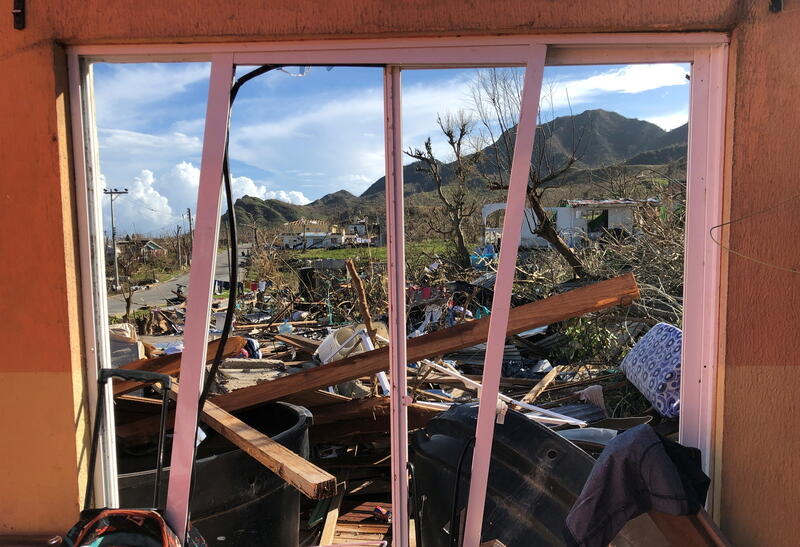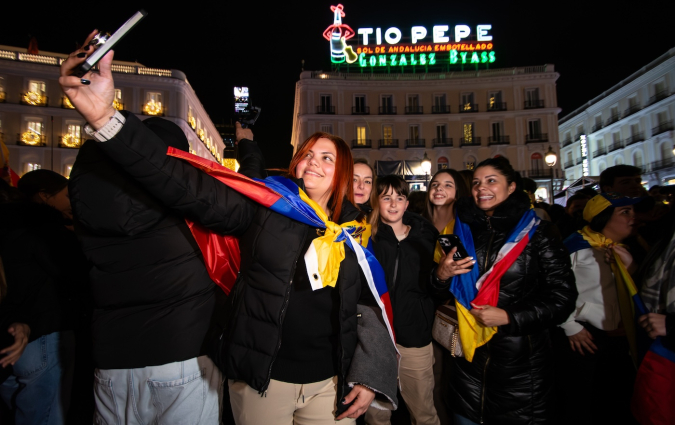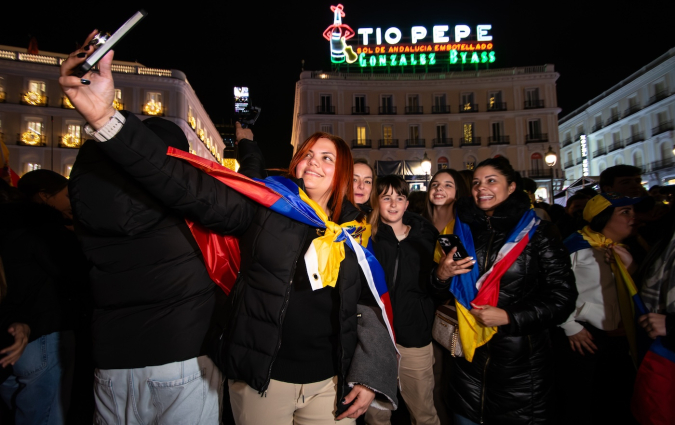Journalists should help audiences understand extreme weather – even when they lack climate data

A damaged house is seen after the passing of Storm Iota, in Providencia, Colombia, in November 2020. Credit: REUTERS / ANDRÉS ROJAS
In November 2020, Colombia, my home country, was hit for the first time by a Category 5 hurricane. Iota, as it was named, reached the islands of San Andrés, Providencia and Santa Catalina, an archipelago to the north of the Colombian coast, where it hit its maximum strength.
The scene that Iota left behind was devastating. And in the aftermath of the chaos one question arose louder than ever: was Iota’s strength due to climate change?
Any journalist who relates to this anecdote will know that it is not an easy question to answer. Attribution studies, which seek to use a series of models to see whether extreme weather events have been made more likely by climate change or not, still usually take scientists weeks or months to complete, and much longer to be officially published in scientific papers.
And in countries like Colombia, a country highly vulnerable to climate change, scientific data is often elusive or might even not exist.
In the portal of World Weather Attribution, an initiative doing an excellent job publishing climate change attribution studies with all the rigour of the scientific method without the time constraints of scientific journals, there are only four publications related to South America. The initiative has not conducted any studies in Colombia, although they have collaborated with Colombian researcher Paola Arias, a professor at the Universidad de Antioquia and a lead author of a chapter in the IPCC Working Group I report.
This leaves Colombian journalists with a problem. How do you answer the “is this disaster related to climate change” question when there is no certainty? My answer: take the opportunity to give a little lesson on the science of climate change attribution.
Simply saying “there is no certainty” – as journalists have done for years – can lead people to be sceptical of climate change. Whereas answering it too simply may mean audiences automatically think there’s bound to be no link at all. A lack of certainty could also lead audiences to think that postponing climate action has no consequences.
There are other reasons to be worried. Last year, a group of scientists published a paper in the International Journal of Disaster Risk Reduction exploring how citizens and leaders explained weather disasters in Latin America and the Caribbean, and if they related them to climate change. They found five different narratives, including one in which citizens believe that climate change is a “condition that distracts authorities and people from other immediate daily challenges such as violence, crime, unemployment, food insecurity, and lack of infrastructure.”
Journalists have another option. They can and should take advantage of this uncertainty to explain that, even if scientists don’t have an answer to this particular event, they have found a lot of clues on how climate change has altered certain phenomena.
In Hurricane Iota's case, a journalist can explain that climate change has increased the intensity of hurricanes in general, and that it has also slowed them down. In other words, this means that they spend more time in the ocean, gaining strength, and they stall more when they are about to hit the coast.
For Latin American journalists, navigating through this scientific information comes with another barrier: most guides are in English. But the development of Latin American climate journalism has been an important piece of the puzzle: it has created networks of specialised journalists willing to help explain climate science in Spanish.
A recent example
In September 2022, after Hurricane Ian passed over Cuba and then Florida, many journalists in Latin America received an email from Periodistas por el Planeta, a civil association that wants to enhance climate communication in Spanish and in the region. They sent helpful material about the relationship between climate change and hurricanes. It had been generated by Climate Signals, a project from the US-based nonprofit Climate Nexus, but it was translated into Spanish, including how hurricane intensity had increased since 1979, and the role played by rising sea surface temperatures and ocean heat.
World Weather Attribution, too, offers general guidelines for covering disasters and their climate links – including a guide in Spanish. These resources aren’t just introducing a topic, but offer some practical clues on where to start when explaining these nuances to our audiences.
In the case of América Futura, the section I work for at El País, that email was also the seed for an article an editor wrote titled: “Is climate change making hurricanes more powerful? Here's what science says.” That piece was among our the most read articles in the following days.
Why? Because after Hurricane Ian, people were asking themselves that exact question. Even with the uncertainty of no official attribution study, we were able to provide them with a smart, scientific answer, and give certainty to actions and audiences about climate change.
In every email we send you'll find original reporting, evidence-based insights, online seminars and readings curated from 100s of sources - all in 5 minutes.
- Twice a week
- More than 20,000 people receive it
- Unsubscribe any time







